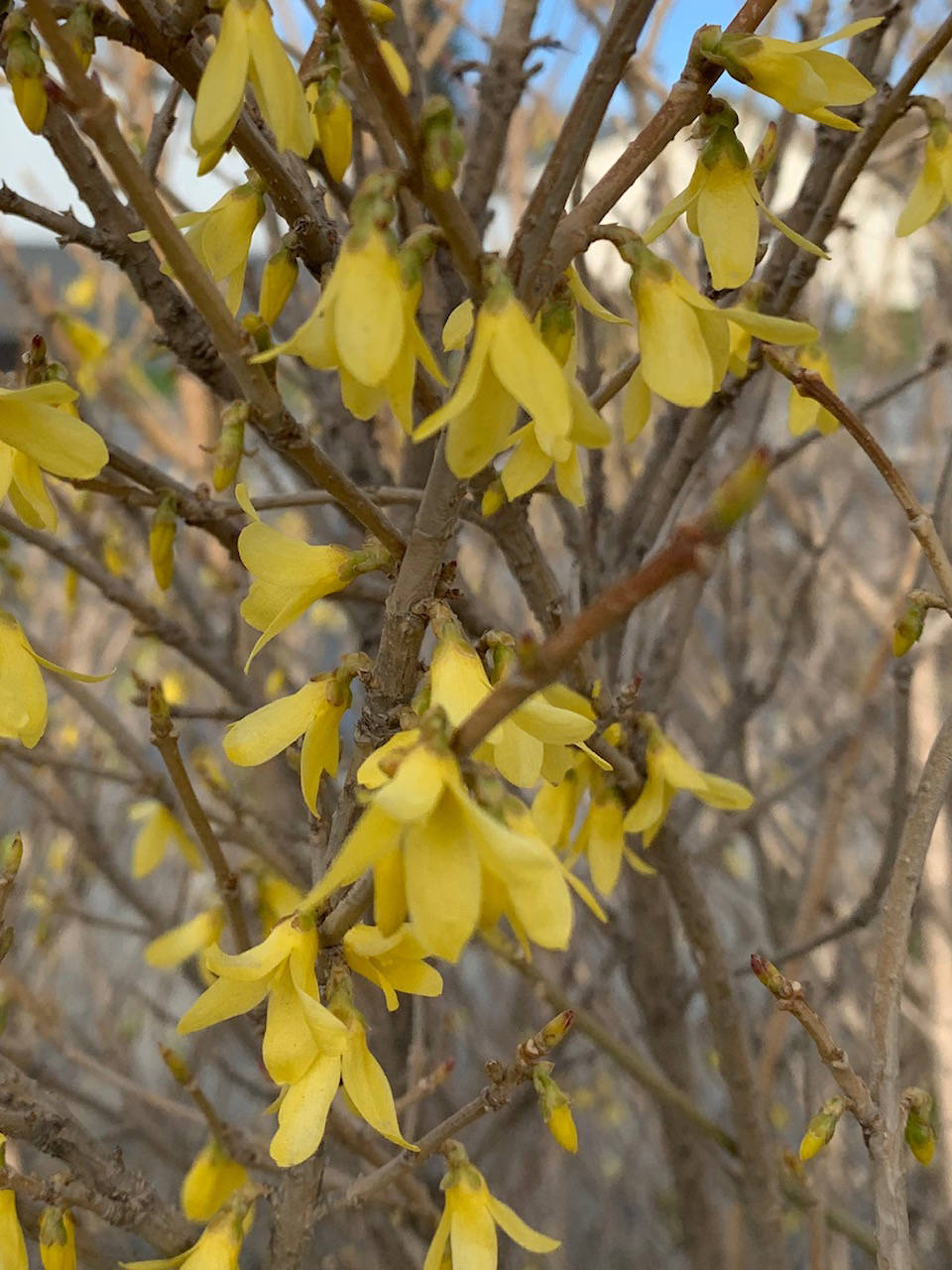Homer’s nurseries are truly magnificent.
There was a time in the not so distant past that I would journey as far north as Wasilla, stopping at each and every nursery along the way. It took three days. No more. We are so very fortunate to have the selection that we do at our very doorstep. Take advantage of what they have to offer, and thank them.
Once you have made your selections you might need to harden off the seedlings. This involves acclimating the tender plants to the Far North.
I let my purchased plants take a rest on the covered porch once they are unloaded from the car. Then, in a couple of days, they take a step forward onto the boardwalk and are covered with floating row cover, then back to the covered porch for the night. Back and forth for a few days and then left out with the cover, and then the cover comes off. I know, this sounds tedious and, in fact, it is.
It actually gets worse: the plants that I have started from seed need to make the same transition and there are very, very many more of them. But they are all in the greenhouse and their journey takes them to and from that shelter to a path in the vegetable garden. Still, all are covered with floating row cover. In and out for a few days until I lose interest and leave them out. Confession: there have been years when I just leave them out and plant them a few days later. Tough love.
Just lay this material over the seedlings; there’s no need for a support system. You will be distressed by the bending of your young and tender investments, but they will rebound effortlessly.
I do believe that the floating row cover is key; be sure to have some on hand. It can be cut to size, so buy enough and store what you don’t use, but not where mice/voles/shrews/squirrels can access it for their nesting material. This is experience speaking. You have been warned.
If you have annual (bloom the first year, throw their seed, then die …) flowers be sure to pinch out the center of the seedling before you plant it. This will promote bushiness and more flowers, which is exactly what you are striving for — strong bloomy plants.
Here at elevation 396 feet I am aiming to plant out seedlings (all vegetables and most but not all flowers) by this weekend. The weather forecast is excellent: overcast and rain. Put on your rain gear and go forth. Bright sun, which brings heat, is too much stress for tender plants. You may appreciate it, and eventually so will your plants, but not when first installed.
When setting out your plants, be sure to snuggle them down into the ground so they are very secure and bury the stem. This will stabilize them when the inevitable wind whips them around. So much to contend with.
The entire vegetable garden will be shrouded in floating row cover. It is not a pretty sight, but the results are worth it. The temperature is increased about four degrees and the dreaded fly that lays the root maggot will be thwarted. Life doesn’t get better.
For those of you who I have advised to put cardboard down over your grass and throw some topsoil on it, I have been a bit flippant. Wagon Wheel Steve reminded me that Alaska topsoil is peat and has zero nutrient value. True. So I went forth and checked out a couple places that offer “topsoil.” Go for the one that offers screened peat; it will save a bit of work. Then find aged manure. Really, it isn’t that hard. There are enough horses in this area that spend a great deal of time manufacturing manure in a fenced pasture that the owners will gladly let you shovel to your heart’s content. Go for it. Or hire a teenager. Sprinkle lime overall, which really should have been done last fall, but, hey, you need to get gardening.
In the meantime you will be getting your compost pile going. Start now with the first lawn mowing. You won’t want to collect clippings every time you mow because the grass needs its own clippings to flourish. There’s no need to feed grass, just mow often enough that the clippings can remain on the surface. Gather a wheelbarrow full when you want to add to the compost. Rake up some leaves, save up your kitchen scraps sans meat, and away you go. This is not a big deal; composting has been happening as long as humans have gardened. I’ll mention this process in subsequent columns, just to jolly you along.
I love my little weed burner. I used it on the rock paths in the perennial garden weeks ago and am ready to run it again. If I do this early enough and often enough I won’t need to do it again the rest of the season. What a relief to no longer spend a day weeding rocks. Delight. Don’t wait for the weeds/volunteer annuals to show up, burn before they get a root hold and life will be even easier.
Take a look at your perennials. If you haven’t already made divisions, get at it. With this rain the soil is workable and the digging shouldn’t be too awful. My neighbor, Karen, has an enormous clump of yellow iris. She is considering hiring a little excavator to remove the whole mess. Get to your perennials before being faced with a similar situation.
The past two weeks have been spent weeding the perennial beds, eating lettuce and radishes out of the greenhouse, shaking the tomato plants to fertilize the blooms (that’s all you need to do, just shake the plant), and trying to stay warm. Summer will come. I think.
Rosemary Fitzpatrick is a longtime Homer gardener and has been writing Kachemak Gardener since 1990.


